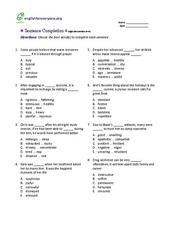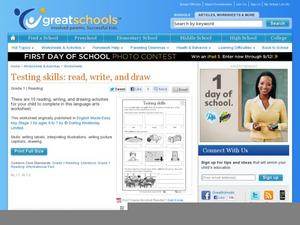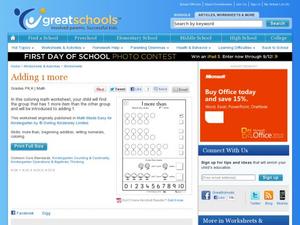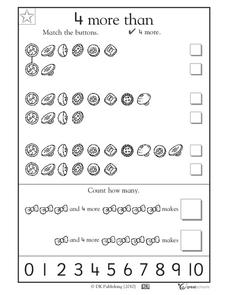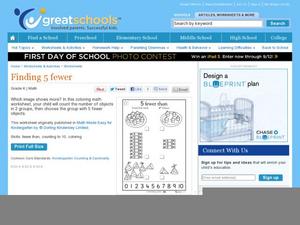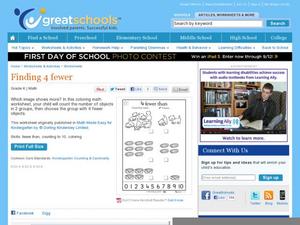Media Smarts
Television Broadcast Ratings
Explore the relationships between programming, advertising, and the ensuing rating wars. Help develop the media smarts of your pupils through this examination of advertisers for popular shows. Although the included Sweep Chart features...
Power Show
Out of the Dust
Is your class reading Out of the Dust? If they are, or if this is your first time teaching Karen Hesse's Newbery Medal winning novel, check out the ideas in a presentation that outlines what you and your class can do while reading about...
Curated OER
Antonyms 5: Level 10
Ensure that your class's vocabulary development doesn't become stagnant with this antonym practice! Learners review 10 vocabulary words, identify the antonym of each, and check their answers on the detailed guide provided. Example words...
Curated OER
Reading Comprehension 1: Level 9
The Iditarod Trail and the Iditarod Trail Sled Dog Race are the focus of a comprehension assessment. Readers must identify the main idea of the passage, draw inferences, define words using context clues, and identify the organizational...
Curated OER
Reading Comprehension 5: Level 8
Why is an atlas called an atlas? Because it is named for the Greek Titan, Atlas, of course. Young readers learn all about Atlas and atlases in a short passage used as the basis of a reading comprehension exercise. After responding to...
Curated OER
Sentence Completion 4: High-Intermediate level
Do your learners need more sentence completion practice? Check out this eight-question worksheet. It comes with an answer and explanations key that models how to approach each question. Logical explanations and comprehension strategies...
Curated OER
Glossaries
Explore text structure with a focus on the glossary feature in informational texts. Learners read a brief introduction before examining a glossary from a text about plants. They reference it while completing four comprehension questions....
Curated OER
Testing Skills
Get practice reading, writing, and spelling in one worksheet. Learners test their skills in this 10-part activity. First, they read three words and illustrate each in the boxes above. In the next six boxes they examine pictures and write...
Curated OER
What's in Front?
Front and back are common prepositions. Early readers will practice understanding relative positions while using common prepositions by placing a check next to objects in front. Then they draw a cat in front of the house. Tip: Discuss...
DK Publishing
What's Inside?
Is it inside or outside? Learners follow directions by placing a check next to the items that are located inside. They then draw a circle inside the box. This is a great way to introduce the concepts of relative position and prepositions...
Curated OER
Behind
Where is the mouse? Young learners look at eight images featuring a mouse and another object, determining his relative location. Is he behind the object? If he is, they put a check mark in the box. If not, they leave it blank. Encourage...
Curated OER
What's Outside?
Learners determine whether the objects shown are inside or outside. They check the box that is near objects that are located outside of something. They then draw candies outside of a jar.
Curated OER
Where's the Bear?
Empower your kids to understand relative location through these practice images. They examine where the bear is relative to other objects in 10 images, checking off one of two prepositions. Once this has been completed, consider having...
DK Publishing
2 More Than
Which one has two more? Each row of objects has a corresponding row, and mathematicians determine which one has two more than the other, checking it off. They work with single-digit values here and should be encouraged to write the...
DK Publishing
Adding One More, 1 More Than
Gain familiarity with numbers 0-10 with a counting and addition worksheet for beginners. Scholars examine three pairs of circles, checking off the one representing one more than the other. Then, they read illustrated number sentences and...
DK Publishing
4 More Than
Each of these sets of buttons has a corresponding set with four more. Learners examine pairs to determine which one has four more, checking it off. Consider also asking them to write down the specific number of each set to encourage...
DK Publishing
5 More Than
Ready for some beachy addition practice? One of these rows of sea shells has five more than the other; learners examine sets to determine which one has five more, checking it off. Consider also asking them to write down the specific...
DK Publishing
3 More Than
Which one has three more? Young mathematicians compare three sets of objects to determine which has three more, checking it off. Then, they practice beginning addition skills by examining sets of candy and adding them up for a total....
Curated OER
All the 4s
Understanding multiplication facts as sets helps scholars conceptualize this math process easier. The facts they need for these problems are listed at the top, and all involve four as a factor. Review these facts with learners before...
DK Publishing
Finding 1 Fewer
Can your kindergartners identify which group of pictures has one fewer? Given three groups of pictures (kites, planes, and butterflies), youngsters count the amount of items and check the box for the group that has one fewer. A great way...
DK Publishing
2 Fewer Than
Which set has two fewer? Young counters practice with numbers 0-10 and beginning subtraction concepts, focusing on the key term fewer. They examine two sets of undersea animals and check the one with two fewer than the other....
DK Publishing
5 Fewer Than
Before youngsters begin subtracting, give them this visual introduction focusing on the term fewer. They examine three pairs of party-themed object sets to determine which has five fewer than the other. After checking off the fewer...
DK Publishing
4 Fewer Than
Which image has four fewer? There are three sets of objects here which introduce subtraction concepts to beginning mathematicians (although the word subtraction and its symbol do not show up here). They count the number of...
Curated OER
Sorting 2-Dimensional Shapes
Some shapes have square corners, and some do not. Scholars participate in a sorting activity as they determine if these 12 shapes have square corners, categorizing them based on this attribute. Encourage geometers to draw the square into...
Other popular searches
- Checks and Balances
- Writing Checks
- Us Checks and Balances
- Blank Checks
- Checks and Balances Chart
- Checks and Balances, Chart
- Checks & Balances
- U.s. Checks and Balances
- Life Skills Worksheet Checks
- Payroll Checks
- How to Write Checks
- Money Writing Checks





